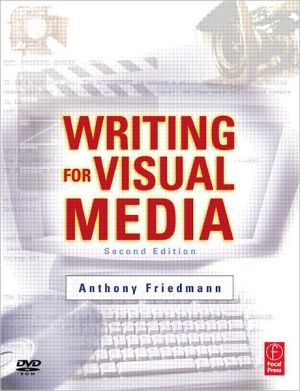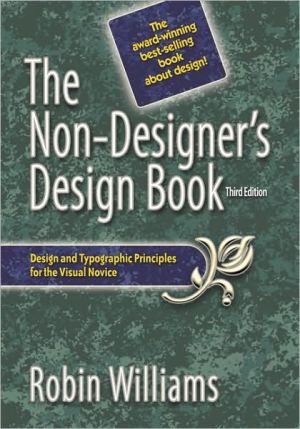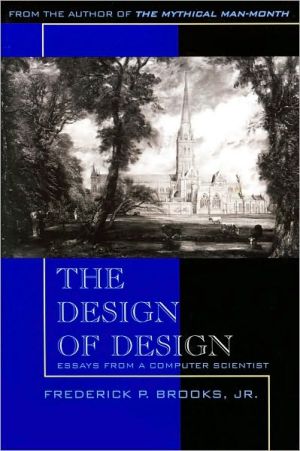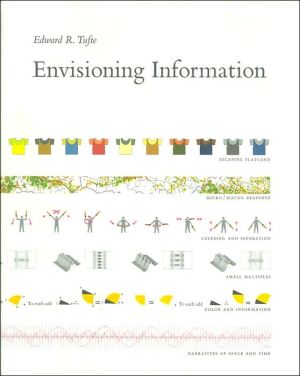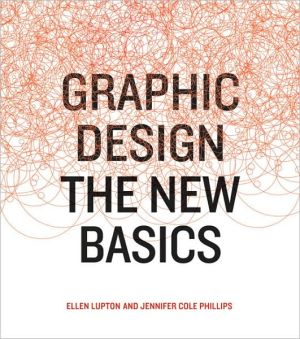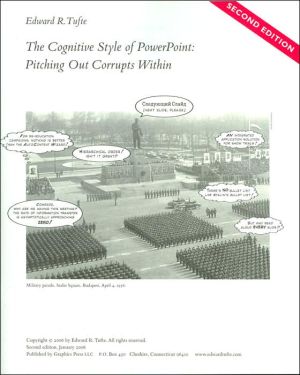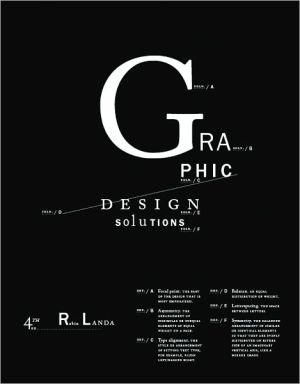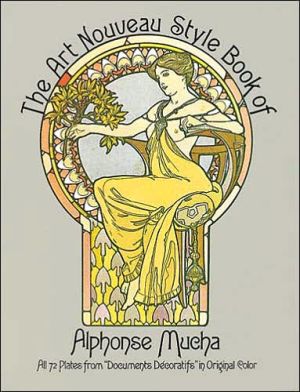Writing for Visual Media
Writing for Visual Media looks at the fundamental problems a writer faces in learning to create content for media that is to be seen rather than read. It takes you from basic concepts to practice through a seven-step method that helps you identify a communications problem, think it through, and find a resolution before beginning to write.\ Through successive exercises, Writing for Visual Media helps you acquire the basic skills and confidence you need to write effective films, corporate and...
Search in google:
Learn how to craft compelling scripts for visual media!
Writing for Visual Media\ \ By Anthony Friedmann \ Focal Press\ Copyright © 2010 Elsevier Inc.\ All right reserved.\ ISBN: 978-0-08-096188-0 \ \ \ Chapter One\ Describing One Medium Through Another \ KEY TERMS\ a sequence of images Academy of Motion Picture Arts and Sciences action creative concept D. W. Griffith dialogue cards Louis Lumière meta-writing omniscient narrator photo-drama photoplay scenario screenplay script scriptwriting Thomas A. Edison treatment visual writing visual metaphor visual writing writing in one medium for another\ The essential problem of writing for visual media comes from the difference between print as a medium, or words on a page, and the medium of moving images. You have to describe an audiovisual medium that plays in real time using a written medium that is abstract and frozen in time. So, a description in words on a page of what is to be seen on a screen has limited value until it is translated into that medium itself.\ WRITING NOT TO BE READ BUT TO BE MADE\ The fundamental premise of scriptwriting is that you are writing not to be read but to be made. This does not mean that a script is not read by producers, directors, and others who must decide whether to put resources into producing it. It means that the audience doesn't read the script. By contrast, a novelist or a poet or a journalist writes what the reader reads. I am now writing what my readers will experience directly as written language. Not so for a scriptwriter! Just as the musical score is a set of instructions to musicians and an architectural blueprint is a set of instructions to builders, a script is a set of instructions to a production crew to make a film, a video, or a television program. Only the ideas, scenes, and dialogue that are written down get made. This is the first principle to keep in mind.\ Whatever your vision, whatever your idea, whatever you want to see on the screen, you must describe it in language that a team of technicians and visual image workers can understand and translate into perceived moving images and sound.\ A script is fundamental to the process of making a movie, video, or any type of visual program. It is the basis for production. From it flow a huge number of production decisions, consequences, and actions. The first of these is cost. Every stroke of the pen (or every keystroke) implies a production cost to bring it to reality on the screen. Although the techniques of filmmaking and special effects are seemingly without boundaries these days, extravagant ideas incur extravagant cost. A writer must keep in mind that a production budget is written with every word by virtue of the visual ideas contained in the script, whether that script is for a feature film or a training video. A script writer can reach an audience only by visualizing and writing potential scenes for directors and producers to shoot and edit. The finished work often reflects a multitude of creative choices and alterations unspecified by the writer.\ WRITING, PRODUCING, AND DIRECTING\ It is often said that a good script can be ruined by bad producing and bad directing, but good producing and good directing cannot save a bad script. Producers and directors have more recognizable roles in the process because production is visible and material. However, the writer's role is sometimes combined with that of either producer or director. Some writers can direct, and some directors can write. Writing and producing can also be combined. If you study program credits, you will see some of these dual roles and combined responsibilities. Some individuals attempt triple responsibilities. Among the Academy Award nominees for 1998, James Cameron had writer, director, and producer credits for Titanic (1998). He has combined these roles again for Avatar (2009). Atom Egoyan, a lesser known Canadian director, had a triple credit in The Sweet Hereafter (1997). The Coen brothers have written and directed many very successful films such as Fargo (1996), which won an Academy Award for best original screenplay, and No Country for Old Men (2007), which won for best adapted screenplay. They also directed these films.\ As a rule, audiences pay little attention to the scriptwriter and often don't recognize the producer or director. Audiences identify with the actors they see on screen. However, they do so only because the writer has created the story that the audience wants to hear, the characters that it believes in, and the words that it accepts as those characters' words. A film or a television series gets made because a producer, a director, and sometimes key acting talent respond to the potential of the script idea. The script expresses the primary imaginative vision that can become a successful program or film.\ The writer's work is somewhat isolated because the writer is the originator, with no one else to lean on. Others are waiting for the scriptwriter to deliver before they can do their work. However, strong collaboration can occur between the writer and the producers and directors and sometimes with other writers. The scriptwriter's work is less isolated than that of the traditional novelist, poet, or biographer because those writers write their words to be read directly by the audience. They do not need any intermediary, except perhaps a publisher, whereas a scriptwriter is never read directly by the audience and needs a team of skilled technicians as intermediaries and a risky investment of millions of dollars to create a result visible on screen.\ In the entertainment world, the viewing audience is usually much larger than the reading audience for a book. It is a measure of the media age we now live in that visual media are so predominant in our imaginations. In fact, the very word audience is a carryover from another age when audiences listened. The word derives from the Latin audio, meaning I hear. Perhaps we should invent a new word, vidience, from the Latin video, meaning I see. Printed media no longer have the monopoly they have enjoyed for 500 years since the Gutenberg era and the invention of the printing press. With the invention of the motion picture camera/projector by Louis Lumière in 1895 and the movie projector by Thomas A. Edison in 1896, a visual medium was born—one that, with its electronic derivatives, has probably displaced the print medium as a primary form of entertainment and now rivals it as a form of communication. Audiences today are primarily viewing audiences.\ Since the invention of the motion picture on film, these visual media have multiplied in type and nature so that a range of visual communication types now exists that require scriptwriting of many different kinds. After movies came television and a dozen different types of program requiring a variety of writing talents. From television came portable television or video, programs recorded on a single camera and edited to be distributed on videotape rather than broadcast. Other exhibition media based on microchip technology synchronizing slide projectors led to extravagant multi-image and multimedia projections for business meetings, museums, and exhibitions. This led to video walls that involve composing images across banks of 9 or 12 TV screens. New combinations of video and computer technology have led to the creation of interactive multimedia both for entertainment and instruction published on CD-ROMs, DVDs, and Websites.\ Scriptwriters are indispensable to all these visual media. Their craft and art lie behind every program. Every time you watch a program on television or see a movie or watch a corporate communication, remind yourself that it began as a script—as words on a page. Don't walk out of the movies or switch the television channel when the credits roll—look for the scriptwriting credit! According to the Writers Guild agreement with the producers of movies, in both the United States and the United Kingdom, the script credit must come immediately before the director's, which is always the last credit.\ MOVING FROM BEING A VIEWER TO BEING A CREATOR\ This brings us to the next point in your transformation from a beginner into a competent scriptwriter. Most of us begin with the experience of being in the audience. We grow up going to the movies and watching television. A complete media experience written, produced, and edited is presented to us for our enjoyment. We are conditioned to be passive consumers of these images. We learn to interpret them. We do not think intensively about how they were created, although some viewers might have had a mild curiosity about this. We just enjoy them.\ You begin to be a scriptwriter when you start to think about how the story got invented, who wrote the dialogue, who decided what the voiceover should say, whether they could have been better or different. It is a change of mindset. A member of the audience decides to get up and cross over to the other side and become a creator. The writer creates for an audience. A writer has to know what it is to be in the audience, but no-one in the audience has to know what it is to be a writer. This transition in awareness and in point of view must take place before you can function successfully as a scriptwriter. The following chapters are designed to engender that transition. It will take time. You are an apprentice to a craft. Where do you begin? Because you are writing in one medium for another, you have to change the way you have been used to writing, which was meant to be read by an audience, and instead write so that your writing works as a set of instructions for a production team.\ THE PRODUCER CANNOT READ YOUR MIND\ Everything begins in your mind, in your imagination. Unless you write down what you see and hear, no one else knows about it. Beginning writers sometimes forget this. Unless the script contains a clear description of your vision from beginning to end, with no gaps, your vision will not reach the screen. The production people who make the script into screen images cannot read your mind. Rule number one: Do not hand over your scriptwriting prerogative and responsibility to the director or actor, or anyone else whose job it is to translate your script into a program. Too often they will take it and do something other than what you intended. If you leave blanks, they will fill in those blanks from their own perspectives. They have to—it is their professional responsibility. There are no empty frames in movies or television.\ INSTRUCTIONS TO THE PRODUCTION CREW\ Consider the differences between the following sentences:\ A man is sitting in a car watching the entrance to a building ....\ and\ A young man, unshaven, sits in a sports car, watching the entrance to a run-down apartment building through binoculars.\ To shoot the first statement leaves a number of decisions to the director and art director: What type of car? What year? Is it period? What street? What else is in the shot? Crowd? Extras? Day? Night? What is the man doing in the car? Does he drive up? Time has to be allowed to set up the shot and rehearse. Permits are required to shoot in the street. These details may not be critical to your scene, but writers have to think all the time about what they should specify and what they can leave up to the good judgment of the production people, mainly the director. As a general rule, be specific. However, to provide answers to all these questions would result in an unusable script, encumbered with unnecessary and unacceptable production detail.\ There is a prevailing sentiment that everyone wants to get the script right before proceeding with production. To change a script involves work and expense. However, until there is agreement about this crucial document, it is difficult to advance the project. So rewriting is almost unavoidable. The script becomes the common denominator of a production to which everybody refers. Production people use the script to make budgets, schedules, sets, select a cast, and choose locations.\ WHAT IS THE ROLE OF A SCRIPTWRITER?\ Because scripts are indispensable to production, writers are indispensable to the producers in the industry. This would seem to put writers in a powerful position. In practice, though, the scriptwriter seems to be the least valued contributor and the most abused. Once a writer delivers a script and is paid, the power to shape the end result wanes rapidly or even ceases. The producer and the director take control of the process. That is why the script must express a convincing vision and be a clear plan. Successful collaboration between a writer and a director is the basis for good films and television programs. The producer's role is to bring about such collaboration and make it possible by finding financial backing.\ The "Script" Writer Is a New Kind of Writer\ The invention of the motion picture also brought about the need for a new kind of writer. In the early days of silent film, one- and two-reelers could be shot without scripts. The first writing job was to write the title cards and dialogue cards that were intercut with action scenes from time to time. More complex stories and longer films needed a scenario (the precursor of the treatment of today) that was written down by writers who could visualize and write action continuity. Scenario, photoplay, photo-drama, now replaced by screenplay or script, were all new terms to describe this kind of writing. The new visual medium required a new kind of writing that described what was to be made visible on the screen. It had to describe the visual content of the frame or shot. It had to describe sequences of shots that would make narrative sense. It had to be a document that could be used as a plan for production. It required visual writing. It required screenwriting. Seeing how early scriptwriters invented techniques and ways of writing for the screen tells us a lot about the problem.\ Many of the early writers for the new medium were women. Anita Loos (Gentlemen Prefer Blondes) wrote for D. W. Griffith and the Biograph Company. Margaret Turnbull, Beulah Marie Dix, and Marion Fairfax wrote for Famous Players-Lasky. Literary writers of novels and plays were recruited by William de Mille to dignify the vulgar image of movies, with sometimes disastrous results because writers despised the medium and condescended to write mainly for the money. It seems clear that nobody really knew how to do this kind of writing. By the 1920s, the idea of writing for the movies had taken hold, and many phony writing schools were advertising to the public: "No physical exertion required—invalids can succeed. Learn in five day's time. Start to write immediately." Very quickly the need for visual writing that translated to the screen and for writing that anticipated practical production realities led to a new writing profession. In the 1930s, after the advent of sound, the Academy of Motion Picture Arts and Sciences set about finding a standard form for the screenplay.\ Everyone who tries to write for the moving picture medium and its derivatives goes through a personal evolution, somewhat as the industry did. You learn about the problem of composing for a visual medium and struggle with finding a form in which to express it. You do not have to reinvent the wheel, just understand why the wheel was invented. Your job is to learn the conventions of the form and layout of a script that the industry has worked out by trial and error. If you do not follow these conventions, you set up barriers to having your work accepted.\ WHAT IS VISUAL WRITING?\ Everybody has heard the old adage that a picture is worth a thousand words. Visual writing means making images stand for words. A clock face tells you that time is passing. In the classic Western High Noon (1952), the characters frequently look at the clock, and the audience sees a cutaway because the time left before the noon train is a powerful plot element. An outlaw recently released from prison and sworn to revenge is arriving on the noon train. The former marshal who put him in prison, just married and now in a dispute with his Quaker wife before they have even left on their honeymoon, desperately tries to recruit a posse but finally has to confront his enemy alone. Although visual writing for the screen involves description, it is not necessarily descriptive prose with a lot of adjectives. The clock in High Noon could be described in two words—CUTAWAY clock. The art director picks the clock to fit the period. We don't need to describe it and say whether it has roman numerals or a pendulum. The clock is a visual idea that communicates the importance of time in the plot. It is a functional visual idea. An image communicates both by logical deduction and emotional implication. A visual medium makes demands on both by using signs, symbols, and icons. You can tell the bad guys from the good guys in a Western without subtitles. Their hats, style of gun belt, clothes, and whether they are shaven or unshaven all let the audience know how to understand the character. Visual writing means writing and thinking with images that the audience will see rather than words they will read.\ (Continues...)\ \ \ \ \ Excerpted from Writing for Visual Media by Anthony Friedmann Copyright © 2010 by Elsevier Inc. . Excerpted by permission of Focal Press. All rights reserved. No part of this excerpt may be reproduced or reprinted without permission in writing from the publisher.\ Excerpts are provided by Dial-A-Book Inc. solely for the personal use of visitors to this web site. \ \
DEFINING THE PROBLEM; Describing One Medium Through Another; Describing Sight and Sound; The Stages of Script Development; A Seven-Step Method for Developing a Creative Concept; SOLVING COMMUNICATION PROBLEMS WITH VISUAL MEDIA; Ads and PSAs: Copywriting for Visual Media; Corporate Communications; Training, Instruction, and Education; Documentary and Nonfiction Narratives; ENTERTAINING WITH VISUAL MEDIA; Dramatic Structure and Form; Techniques for Long-Form Scripts; Writing Techniques for Adaptation; Television Series, Sitcoms, and Soaps; WRITING FOR NONLINEAR AND INTERACTIVE MEDIA; Writing and Interactive Design; Writing for Interactive Communications; Writing for Interactive Entertainment; ANTICIPATING PROFESSIONAL ISSUES; You Can Get Paid to Do This; Appendix: Script Formats
\ From the Publisher"Friedmann's seven-step review for developing creative concepts is worthy of a read by professional and budding writers....Writing for the Visual Media is an important contribution to our understanding of the challenges and skills needed for survival as a visual writer."--Charles Feldman, BEA Journal\ \
